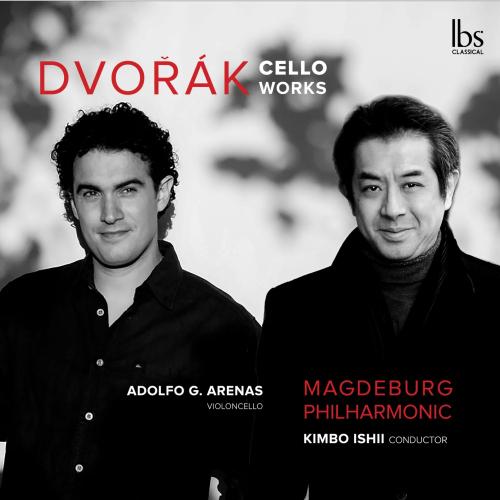
Dvořák: Works for Cello Adolfo Gutiérrez Arenas, Magdeburg Philharmonic Orchestra, Kimbo Ishii, Juan Carlos Garvayo
Album Info
Album Veröffentlichung:
2019
HRA-Veröffentlichung:
24.05.2019
Label: IBS Classical
Genre: Classical
Subgenre: Chamber Music
Interpret: Adolfo Gutiérrez Arenas, Magdeburg Philharmonic Orchestra, Kimbo Ishii, Juan Carlos Garvayo
Komponist: Antonin Dvorak (1814–1894)
Das Album enthält Albumcover Booklet (PDF)
- Antonín Dvořák (1841 - 1904): Cello Concerto No. 2 in B Minor, Op. 104, B. 191:
- 1 Cello Concerto No. 2 in B Minor, Op. 104, B. 191: I. Allegro 16:00
- 2 Cello Concerto No. 2 in B Minor, Op. 104, B. 191: II. Adagio ma non troppo 13:07
- 3 Cello Concerto No. 2 in B Minor, Op. 104, B. 191: III. Finale. Allegro moderato 14:05
- Antonín Dvořák:
- 4 Klid, Op. 68 No. 5, B. 182 (Version for Cello & Orchestra) 06:39
- 5 Rondo in G Minor, Op. 94, B. 181 09:11
- 4 Lieder, Op. 82, B. 157:
- 6 4 Lieder, Op. 82, B. 157: No. 1, Lasst mich allein (Arr. for Cello & Piano) 04:38
Info zu Dvořák: Works for Cello
It is the part the cello must interpret by assuming or acquiring a human nature. Dvořák transforms it into a warm lyrical baritone. He repopulates it with harmonics and nuances. And he shows us that the best way to overcome cello “limitations” is none other than to transcend it. Dvořák turns the cello into a meta-cello. Just as in a Mephistophelian pact, he achieves the feat of “animating” it. And the soul is in the score. You have to know how to find it. No one better to do it than Adolfo Gutiérrez Arenas, from his sensitivity, spontaneity and affinity to an instrument he would never have wanted to explore if Bach and Dvořák had not persuaded him otherwise.
Rather than Concerto for Cello and Orchestra, Dvořák’s Op. 104 should be called Concerto for Orchestra and Cello. And not because the solo instrument does not shine, but because the bohemian composer subordinates the star onanism to the requirement of concertation. It is not even a concerto for orchestra. It is a concerto with orchestra. Dvořák requires musicians to listen and listen to each other, not only from a chamber music perspective, but also applying reciprocal chromatic and rhythmic attention. It is about exploring textures and dynamics. Rather than being a star, the cello interweaves the concerto, takes us to the other shore, but more from the underwater currents than from the waves. The cellist’s mission is to move the mood of the score, to overcome technical challenges as well as to subordinate them to the experience of a collective journey.
Adolfo Gutierréz Arenas, cello
The Magdeburgische Philharmonie
Kimbo Ishii, conductor
Keine Biografie vorhanden.
Booklet für Dvořák: Works for Cello











